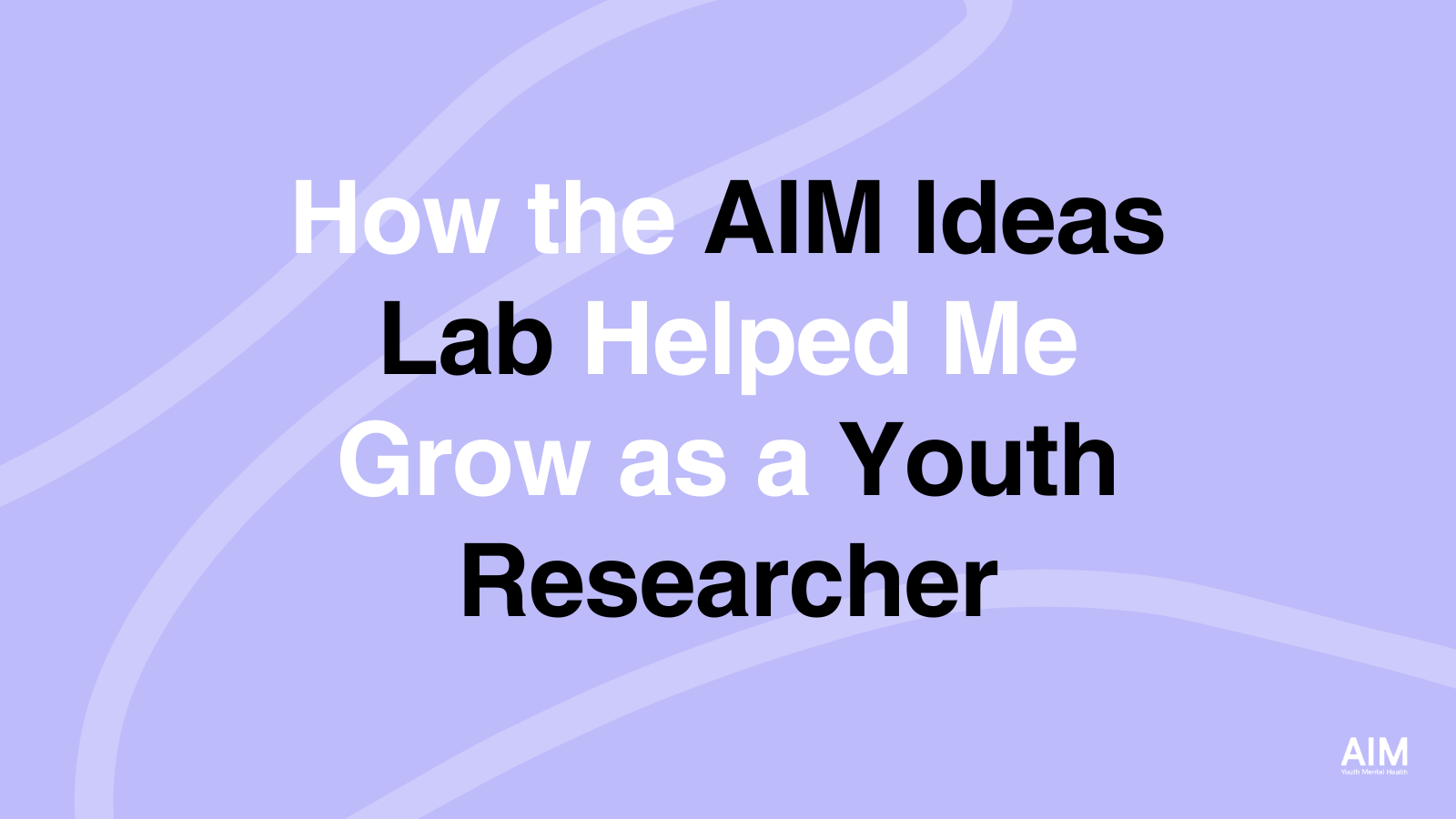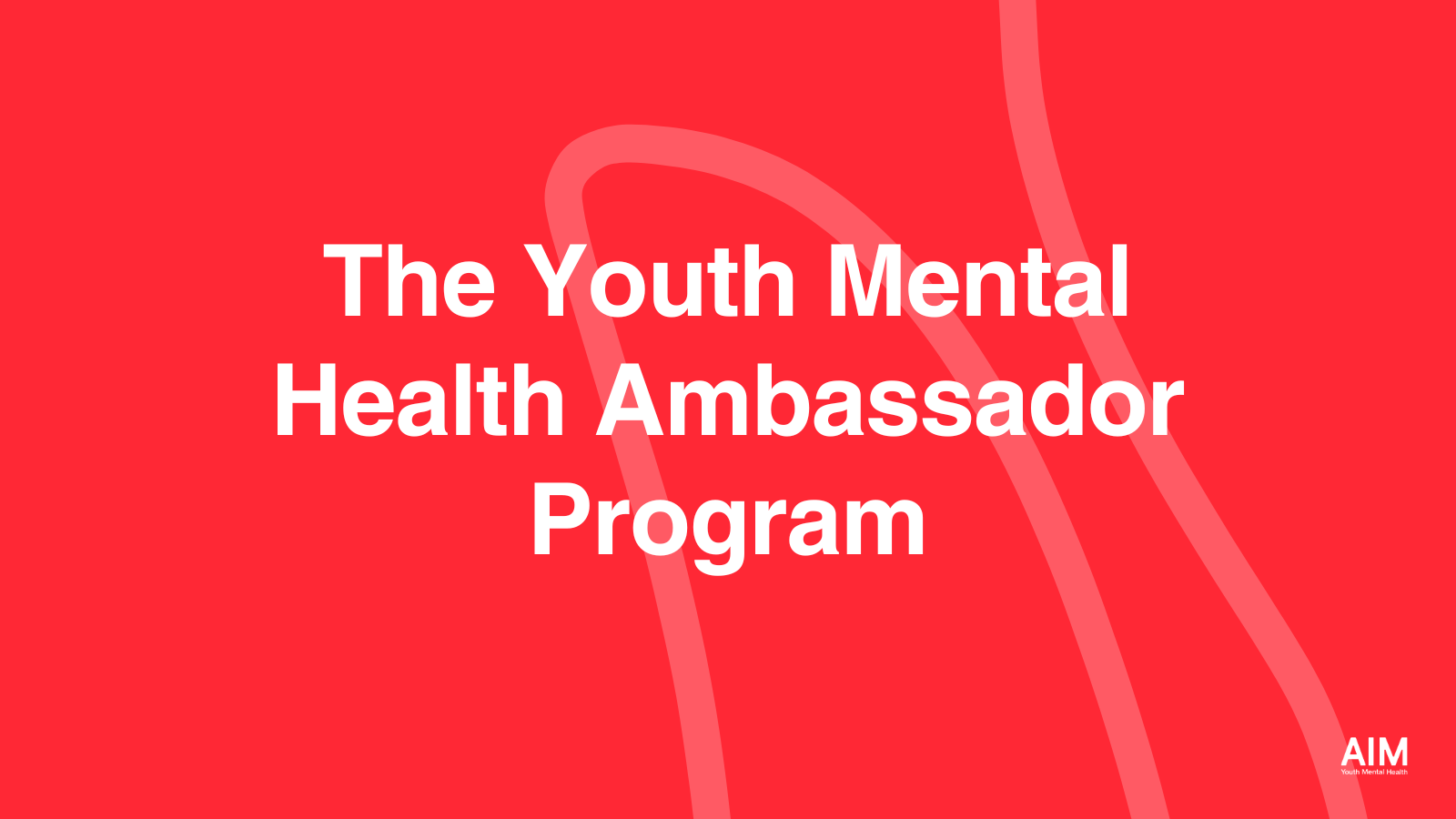Out of the lab and into communities: An interview with Implementation Science expert Dr. Rinad Beidas
By Jill Suttie
The mental health of children has increasingly become a priority in recent years, even more so because of the stressors imposed by the COVID-19 pandemic. But, while it’s more important than ever to deliver effective psychotherapy treatments to youth, there remain barriers that keep children from accessing high quality, equitable mental healthcare that could ease their suffering.

That’s where the work of AIM Scientific Advisory Board member, Dr. Rinad Beidas of Northwestern University comes in. Though Beidas originally went into graduate school to develop new mental health treatments for children, she soon discovered that many effective treatments already existed but were under-used. This inspired her to shift her focus away from therapy development and toward figuring out how to make existing evidence-based treatments more widely available and accessible—what’s called “implementation science.” Her research helps point to what’s needed in order to transform our current mental healthcare system to better serve youth.
As AIM Youth Mental Health invests in implementation science—bringing treatments out of the lab and into communities—we spoke with Dr. Beidas about her work in this area and what it means for families.
Jill Suttie: How did you decide to shift the focus of your research to implementation science?
Rinad Beidas: I was working in a clinic that had developed the gold standard evidence-based practice for pediatric anxiety, which is cognitive behavioral therapy [CBT]. And I realized that so many young people were coming into our clinic having already gotten treatment in the community, but hadn’t gotten CBT. The problem was that often they’d received treatments that didn’t help them, so by the time they got to us, they would be fairly hopeless and unsure if therapy could help them. I had this lightning bulb moment—realizing that kids weren’t getting access to CBT in the community. So, I wanted to increase access to evidence-based practices equitably, in a way that they’d be available to everybody.
This problem isn’t only happening in mental healthcare. It’s a problem across all of healthcare delivery. I do this work in lots of different areas, including cardiovascular disease, HIV, and cancer care. If you consider what’s happened with COVID-19, it’s a great example of how knowing what to do doesn’t mean doing what we know.
JS: What are some of the barriers to getting equitable high-quality care?
RB: Some of my early work was done in partnership with the city of Philadelphia Department of Behavioral Health, where I did a large observational study over many years. The commissioner of mental health at the time, Dr. Arthur Evans, had partnered with treatment developers in Philadelphia, including Dr. Aaron Beck and Dr. Edna Foa, to deploy effective treatments within the public mental health system. Over 10 years, my work focused on the children’s mental health system to see what factors were associated with successful implementation. What we found is that there are multi-level factors that impact delivery of high-quality care—at the patient level, clinician level, and organization level. But if you asked me to put my money down somewhere, it’s really the organizational level factors that matter most—the culture of the organization, particularly how much they expect their clinicians to be competent and have up to date knowledge.
The problem is that there just aren’t enough national and local resources available to organizations providing mental healthcare. When we talk to clinicians and patients, everybody wants to do evidence-based practice. But, we have dire underfunding for mental healthcare in this country. My main takeaway is that we need more resources to support the clinicians and the organizations that provide service to our children and families. The city of Philadelphia and their efforts are an exemplar, as they’ve done an incredible job as a public system making these high-quality treatments available, even given structural challenges.
JS: Clearly more funding is needed for mental health care and advocacy is important. But, what about at the individual level? Are there other barriers that keep people from accessing good mental health care?
RB: I am careful about when and how I investigate individual level factors as barriers to implementation because I personally believe that structural problems require structural solutions. Sure, there may be a family who isn’t as interested in a particular type of therapy because they don’t find it acceptable or appropriate. But, for me that suggests that we didn’t do a good enough job designing our interventions in partnership with the communities we serve.
I’m fairly dogmatic about the fact that a fundamental paradigm shift is needed in the way we think about mental health prevention and intervention. Instead of investigating why an individual might not want an intervention, we should be baking prevention and mental health intervention into the fabric of our lives—we need a population health approach to mental health. I think our current administration is committed to funding and resourcing mental healthcare, so I’m hopeful. But, we need a mental health prevention curriculum in schools and in any place where kids are—instead of waiting until things get bad and then only providing services once kids are really suffering.
JS: What advice would you give parents about seeking treatment for their children, given what you’ve identified as the most important issues in access?
RB: It’s important to ensure that you are attending to your children’s health and mental health needs in the same way that you attend to their physical health needs.

If there are any concerns, seek out care sooner rather than later if you can. If you’re not sure about something, it shouldn’t require a diagnosis to seek help. We should all be having ongoing conversations regularly with children about the importance of mental health and wellness.
Beyond that, you can navigate the mental healthcare system, seeking out evidence-based treatments that we know are effective. This can be tricky, though. The system can be difficult to navigate, and many parents won’t have access to the highest quality treatment, because effective, accessible mental healthcare is not available to them in their community. That points to the need to address structural issues in equitable access.
JS: When I studied clinical psychology long ago, programs varied in how they emphasized using evidence-based treatments like CBT versus other treatment modalities they were partial to. Has that changed? And, if it hasn’t, do you think it should?
RB: That’s an upstream way to ensure that everybody’s delivering high quality care, for sure. But, for me, it’s less about being dogmatic about using a specific modality and more about making sure that anything that’s being implemented is selected because of a systematic, scientific process, where outcomes for young people are measured and tracked. I’m very happy if there’s a community clinic that identifies a new way to deliver treatment that helps their population and can demonstrate its effectiveness using data.
There’s a movement to start measuring treatment outcomes called “measurement-based care” that operationalizes this recommendation. Right now, we currently don’t have an equivalent to measuring blood pressure in mental health—meaning, when you go to any doctor’s office, they measure your blood pressure, but psychotherapists don’t systematically and routinely use something like that [a standardized measurement]. We need to be measuring meaningful experiences of mental health and tracking them and engaging in shared decision making with clients and their families about how treatment is going and what is and isn’t working.
JS: Where does implementation science need to head from here?
RB: I think we need more intervention development partnered with the community—the young people, parents, clinicians, and the settings in which care is meant to be delivered—ensuring that the interventions we develop are feasible, acceptable, and appropriate. We need to shift our paradigm, because right now effective treatments only reach a few people. I want to see more work that rethinks how we deliver mental health care, including how we can use technology to augment the reach of well-trained, high quality clinicians. And, I’d like to see a future where we focus as much on wellness and prevention as we do on treatment.
I’m really excited by the work of a colleague, Dr. Jessica Schleider and I think her work serves as an exemplar of how we can flip the paradigm. She’s been doing single session [psychotherapy] interventions for adolescents, which could have a tremendous reach and impact. Not to say single sessions should replace regular mental healthcare. But, as a field, we really have to start thinking differently about how we care for people more broadly, and her work is a great example of that.
In line with universal prevention approaches, our group is currently doing a study in two large health systems around firearm safety promotion and suicide prevention funded by the National Institute of Mental Health. In this study, we are testing different ways to implement a brief secure firearm storage program in pediatric primary care as a way to save lives. We spent a lot of time partnering with people in the community to ensure that our adapted program was feasible, acceptable, and appropriate; and carefully designed our approach to implementation. I am hopeful that this work can serve as an example of how to go about partnering with the community to address a need.
______________________
About the Author
Jill Suttie, Psy.D., is a free-lance journalist and a staff writer and contributing editor for Greater Good, an award-winning online magazine published by the University of California’s Greater Good Science Center. A psychologist by training, her articles cover scientific research aimed at uncovering the keys to individual wellbeing and a more compassionate society. She also records music and has two CD’s of original songs that can be heard and purchased on her personal website: jillsuttie.com.





